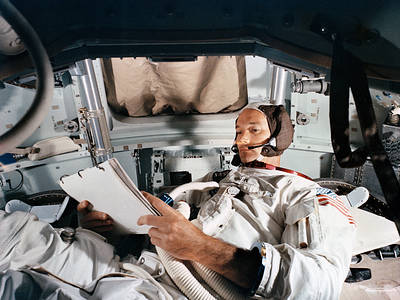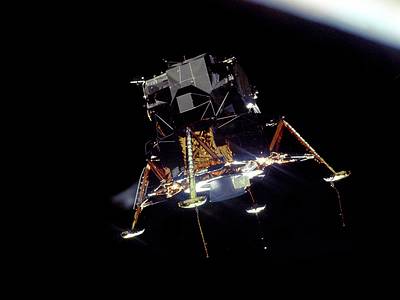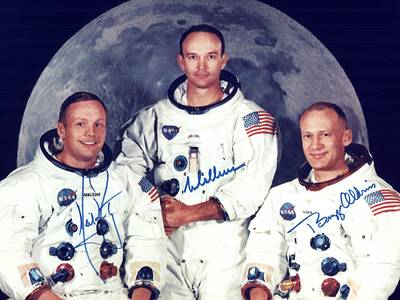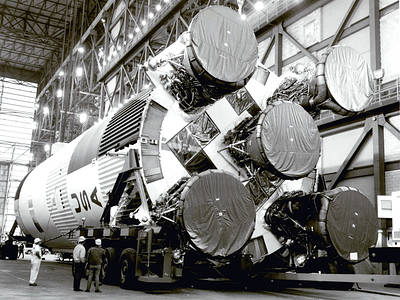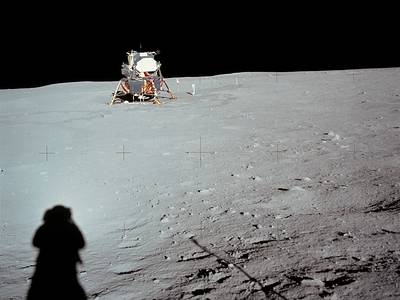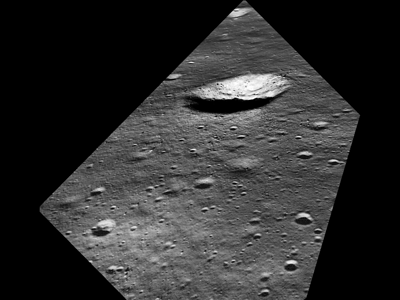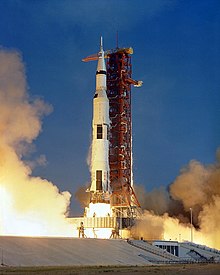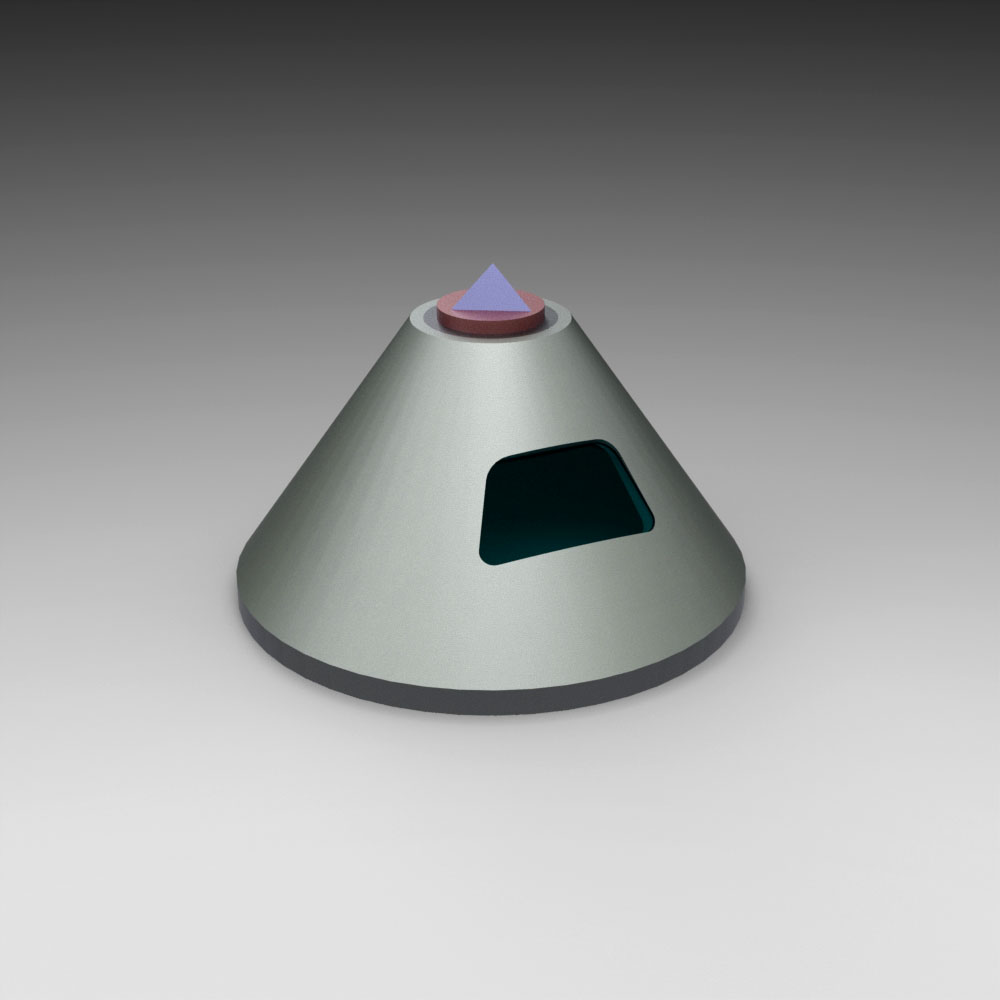
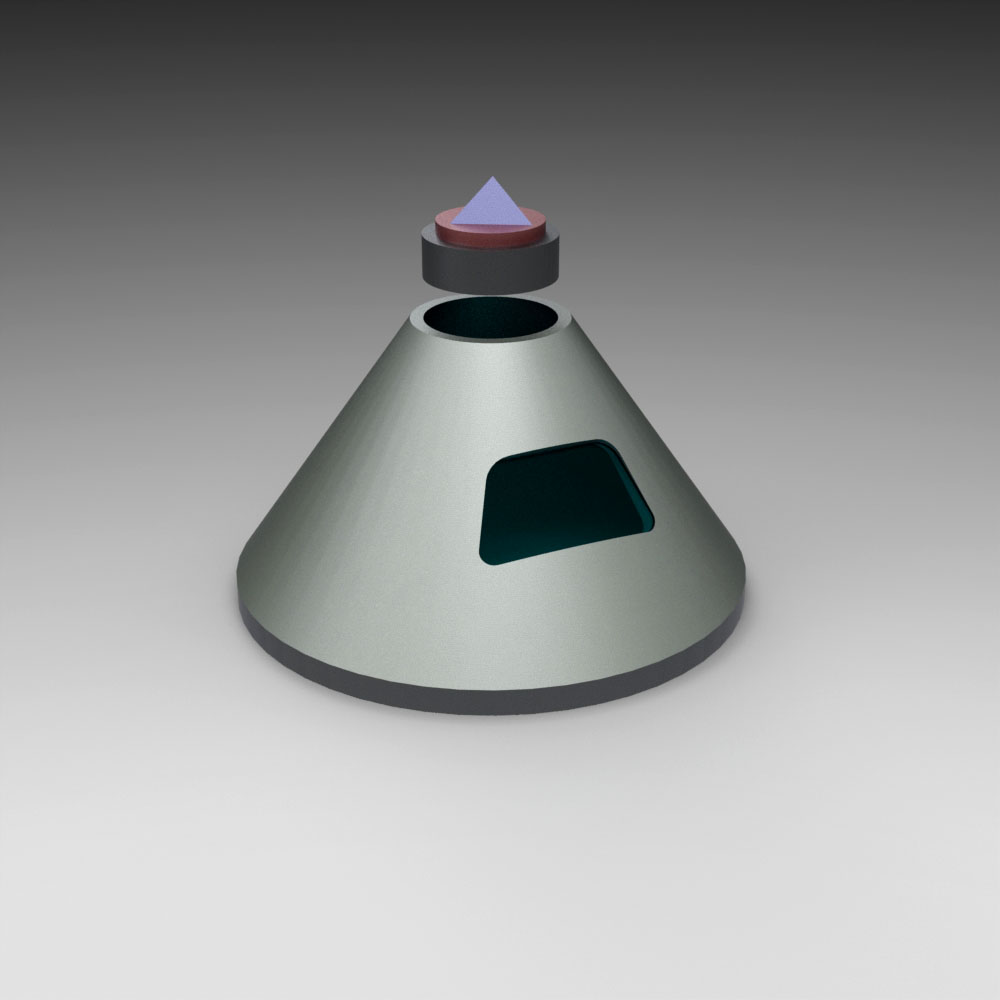
Concept 1 draws insperation in its form from command module of the saturn V Rocket. The shape of the window complements the form of the polished aluminum body, and allows the space dust to be observed. The brushed matte black aluminum base creates a grounded enclosure with the matte black drawing on the darkness of space. The textured matte red and blue cap piece allows for a tight seal with the body ensuring none of the hazdious space dust escapes.
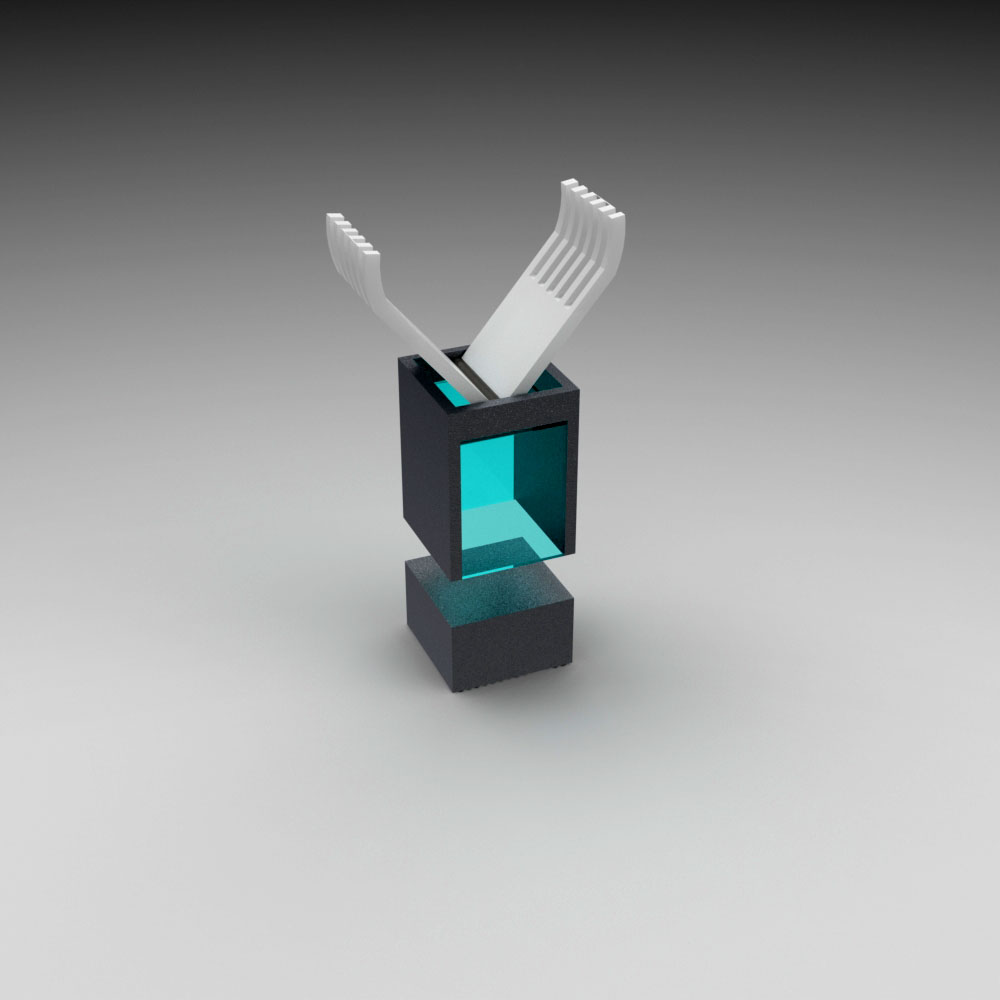
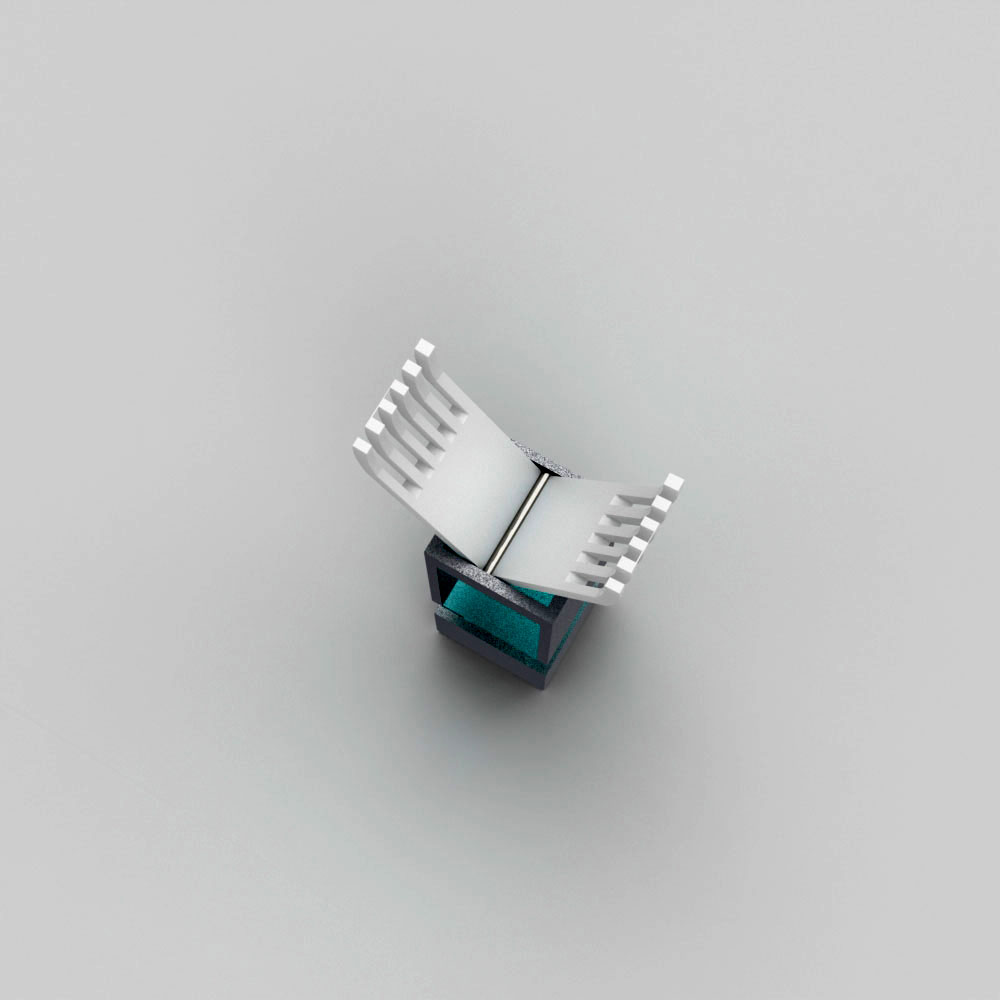
Concept 2 draws from a sample collection tool used to gather the intial lunar samples. The mechanism of the geometric form have been stripped down to instill the essance of the tool, with only the sterile white jaws of the tool remaining. This feature draws on the the care and importance theses samples held as they were a very valuable resouce to the science community on earth, and provided great insights into many diffrent fields. The rough finish to the body of the enclosure represents the utality and necessary functionality of the enclosure.

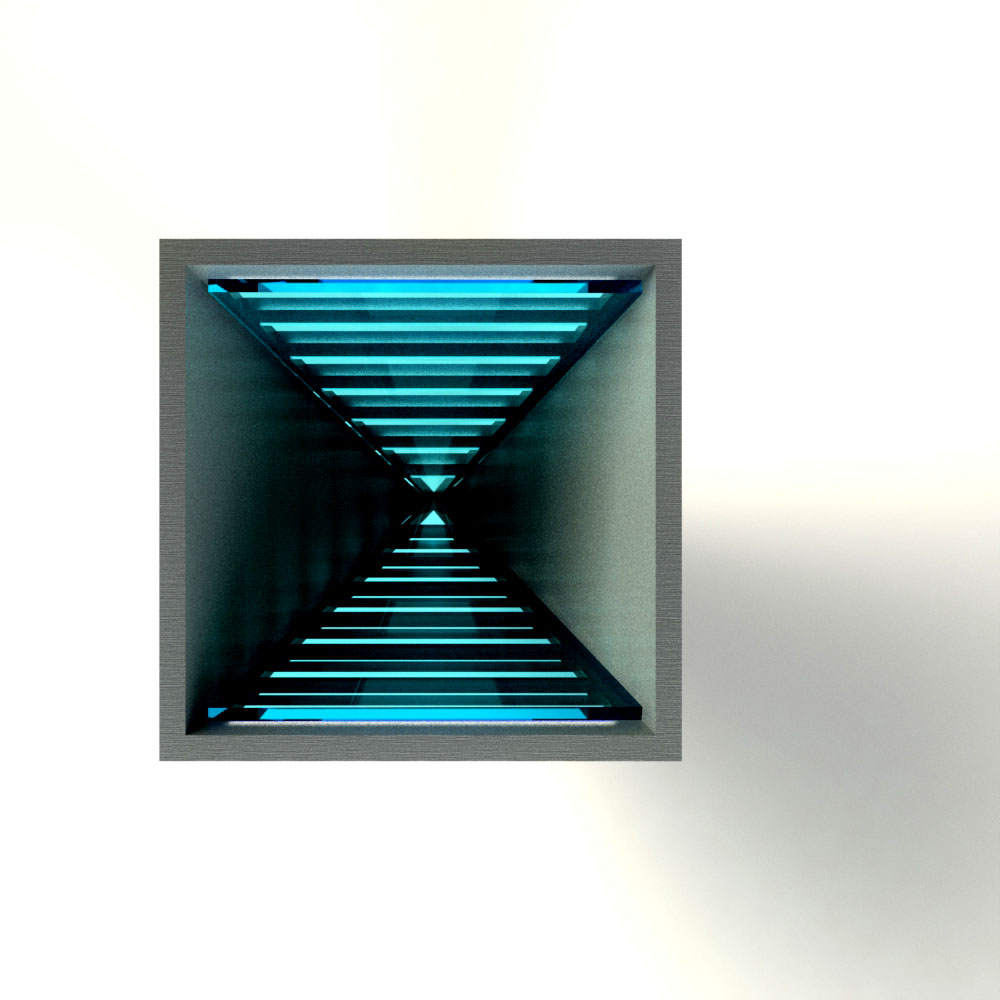
Concept 3 is of a more abstrat form, the prisim finds its shape from the triangular docking port mouthed at the top of the Saturn V command module. The parallel cuts into the body draw their form from the iconic footprint of Neil Armstrong, the first man to step on the lunar surface. The more cream body contrats the more white cap piece (both are in brushed aluminum) and provides a subtle distiontion and purpose into the enclosure. The tinted blue glass accents (as insipred but the NASA design team accents) seal the enclosure and also provide a beauitful light tessellation onto the contents of the enclosure.
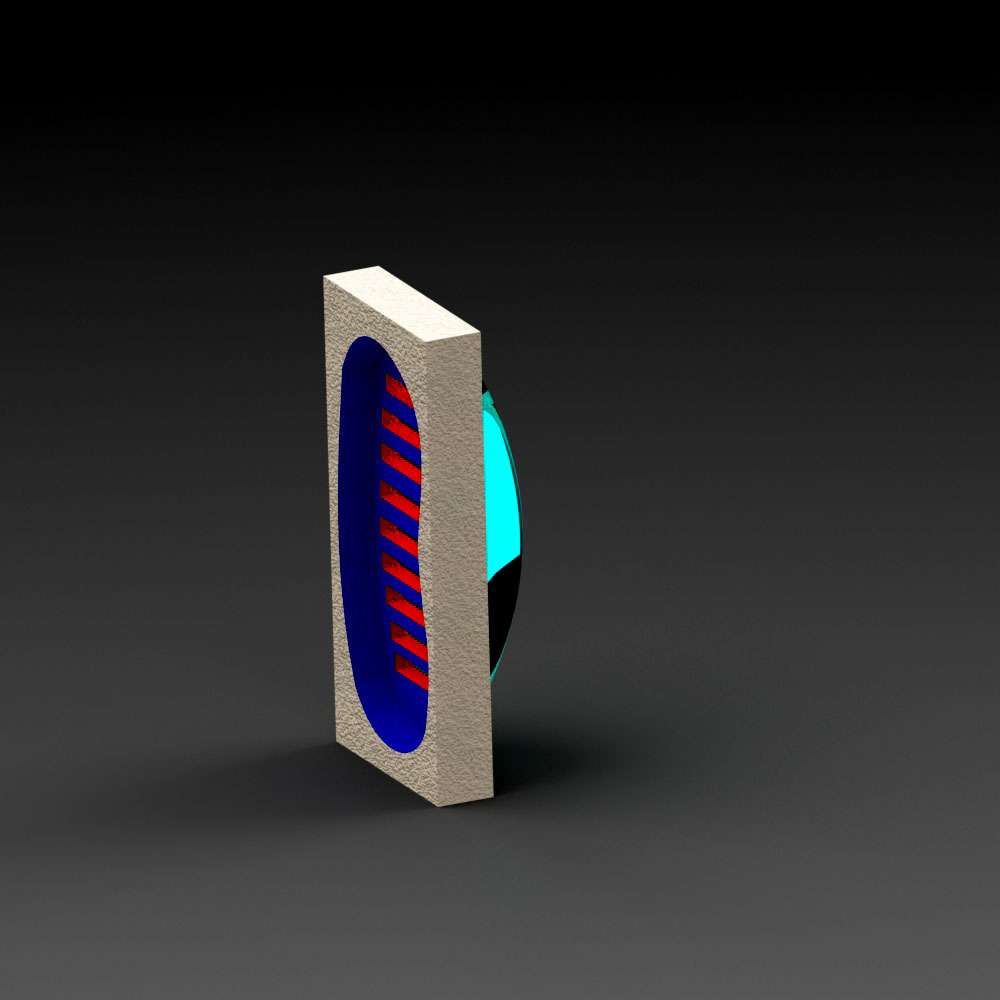


Concept 4 contrast the organic form of the iconic Neil Armstrong footprint against the geometric body, formed of a rough concrete material drawing from the lunar surface. The the blue footprint is accented by the red tred the extrudes through into the glass eliptical dome that contains the sample. If the dome is full of dust the base of the tread will appear as if actually on the moon.
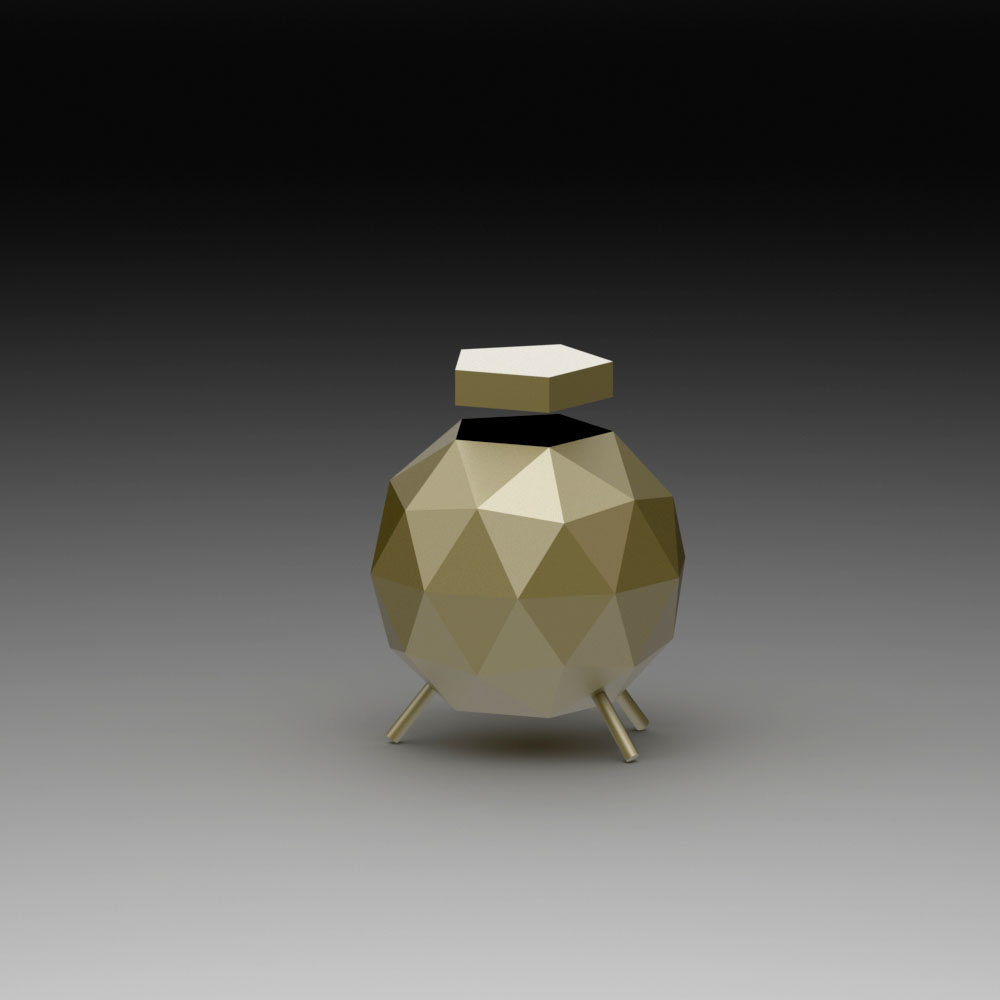
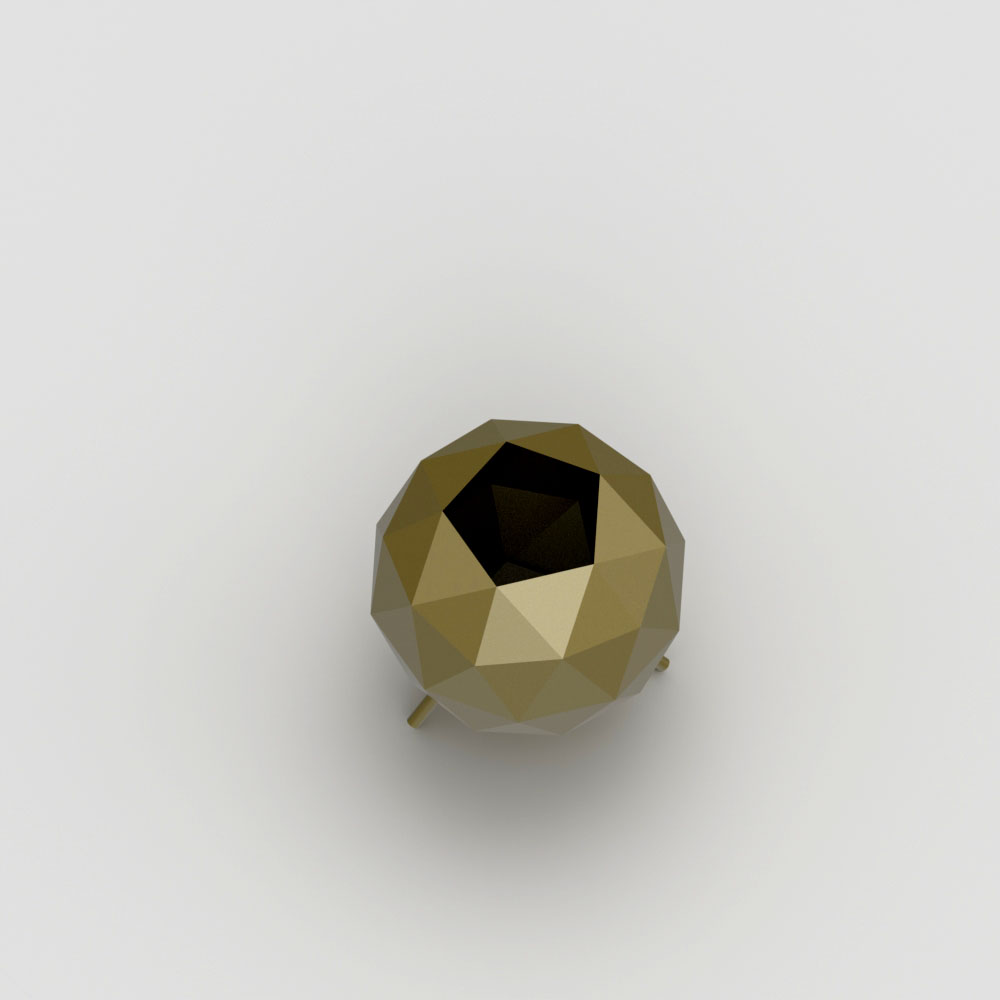
Concept 5 is a triagular Geodesic, this was inspired by the geometric shapes used by NASA and the mathmatical nature of the form pays homage to the engineering behind the Apollo 11 mission.
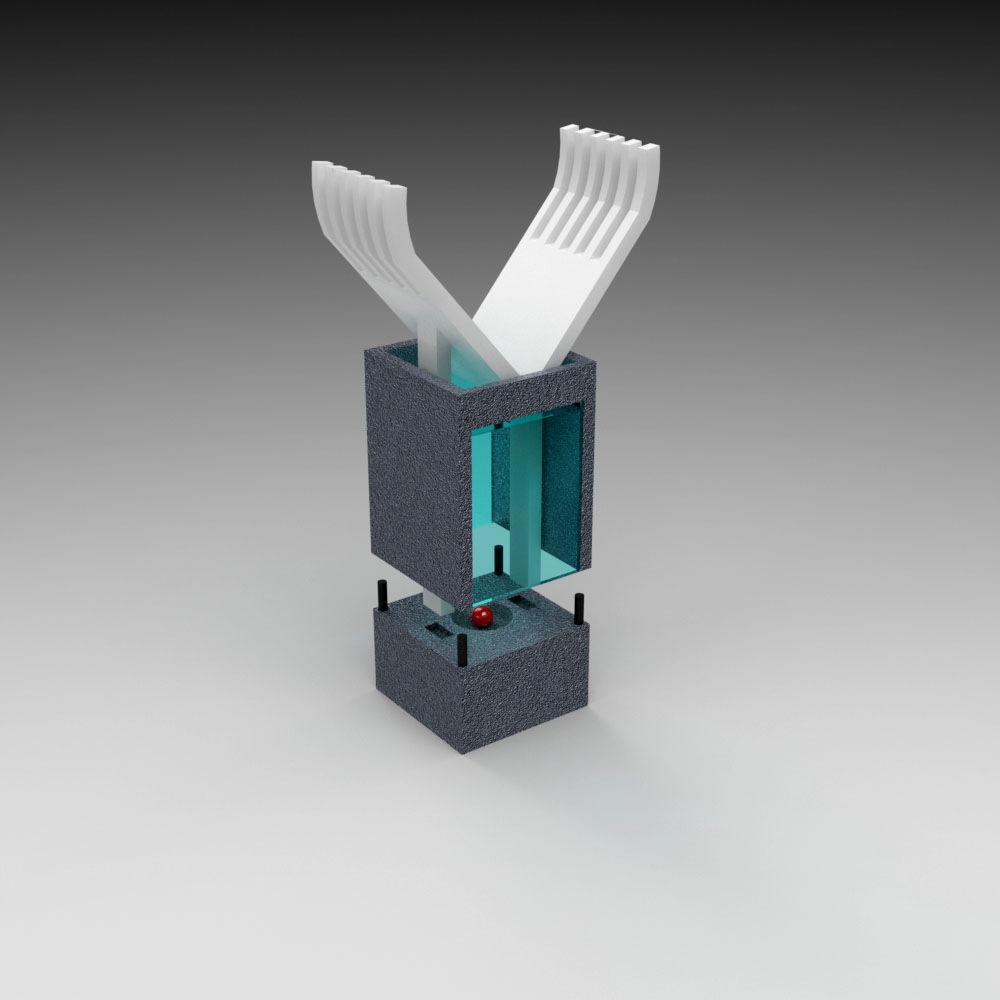
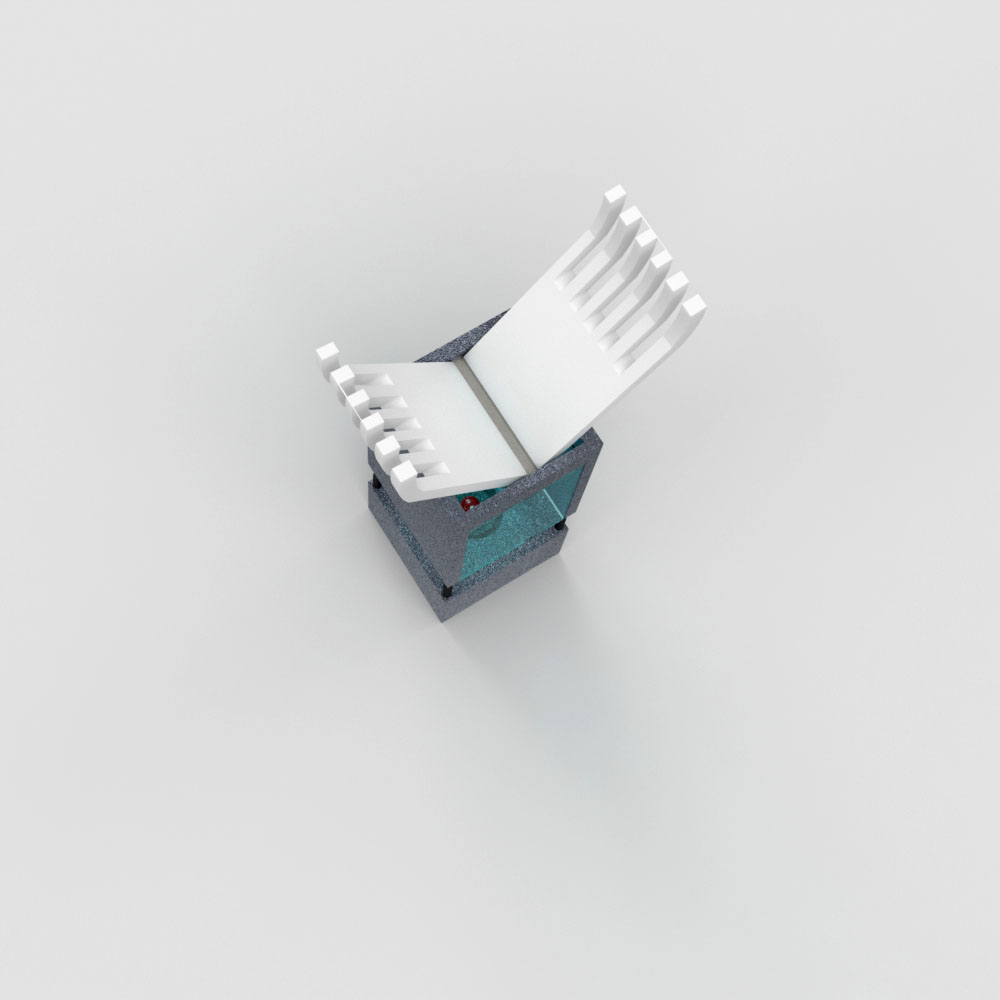

Refinement 1
To develop concept 2 dowels where added to increase the practicality of the enclosure, some function elements where also added so that the jaws will contract when the body is placed on the base. A red ball was also added to help visulise the object better, when rendering.
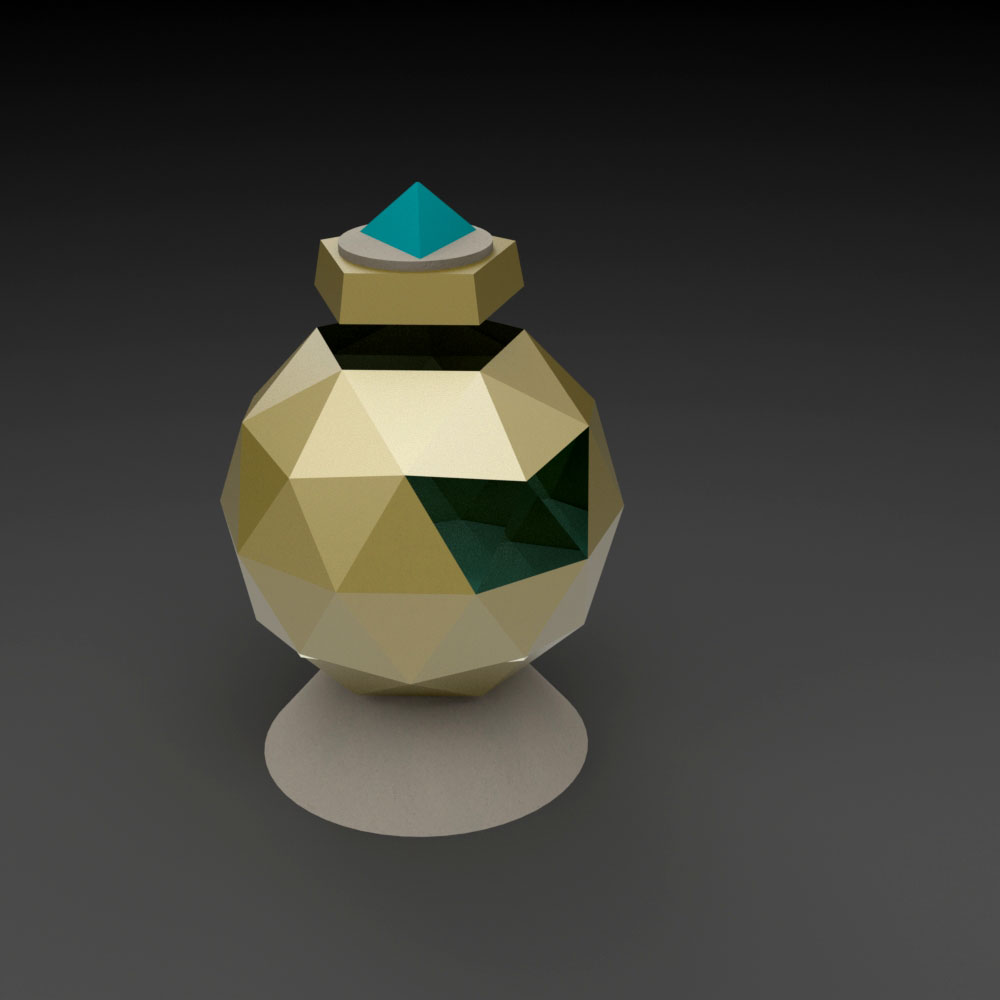
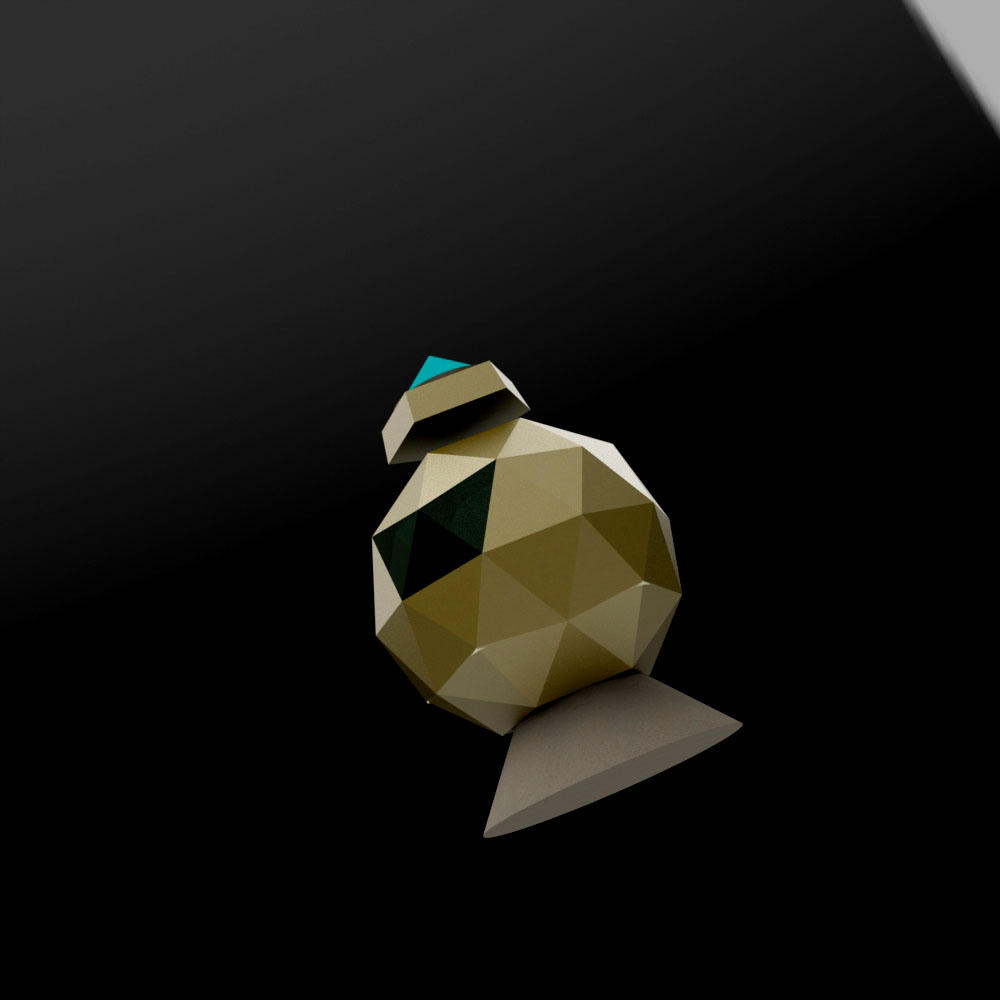
Refinement 2 Geodesic

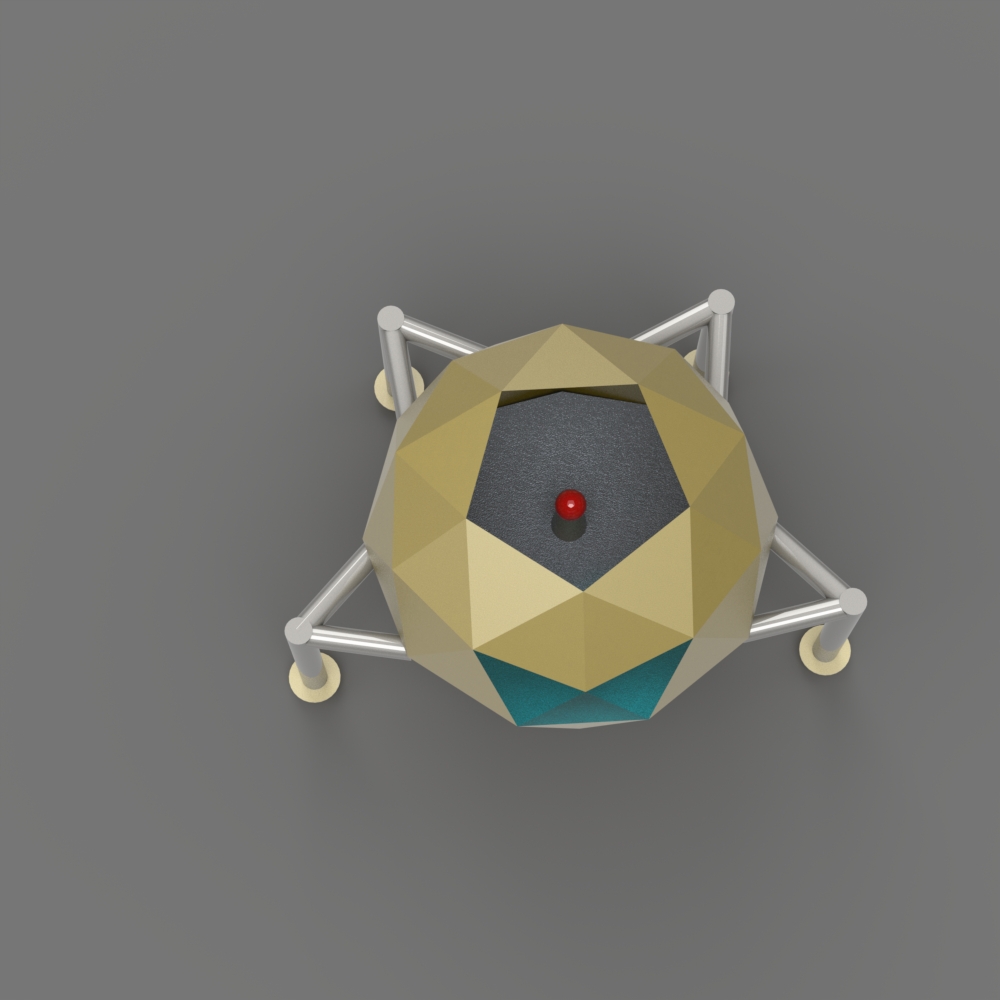
Final






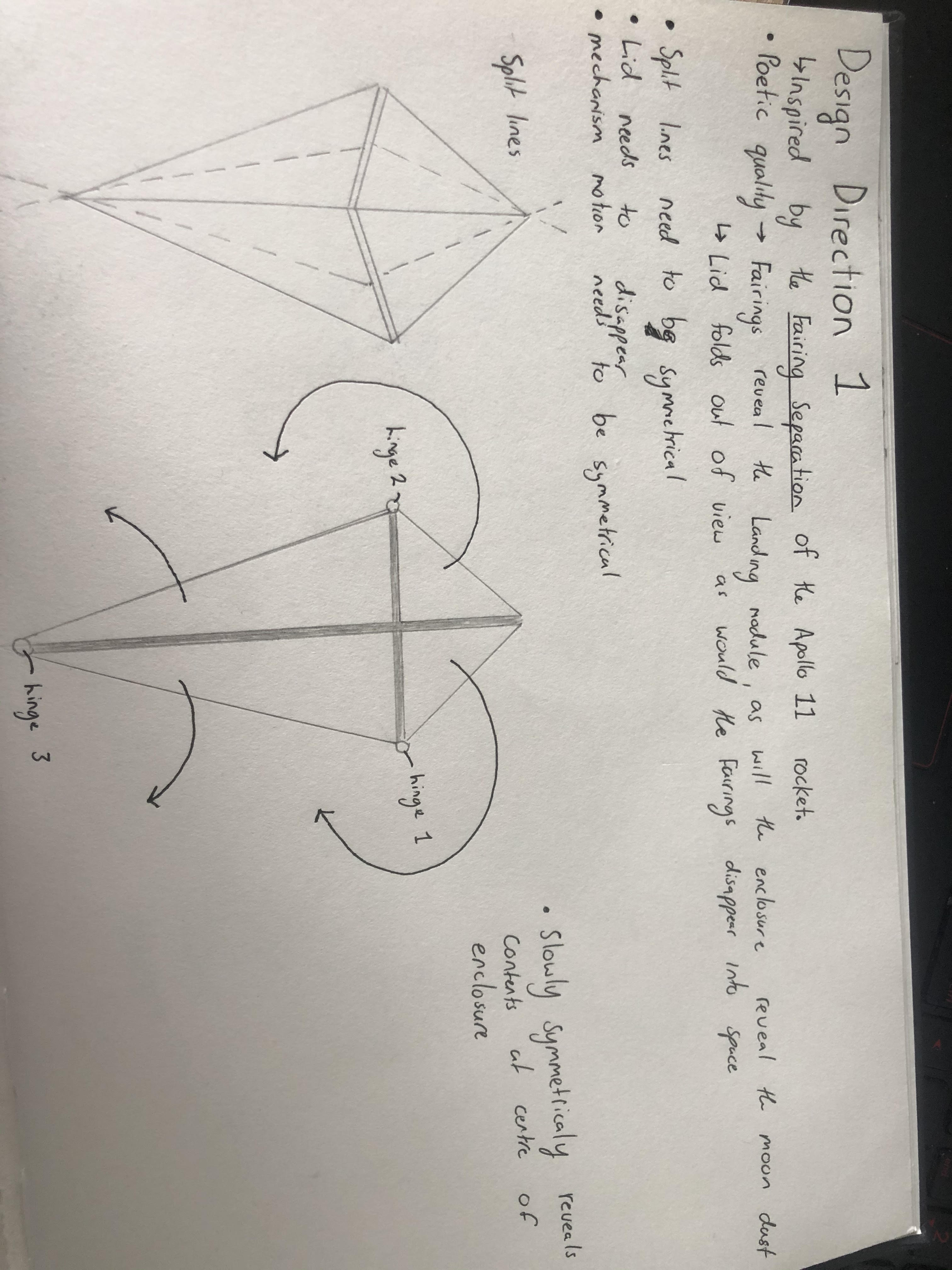

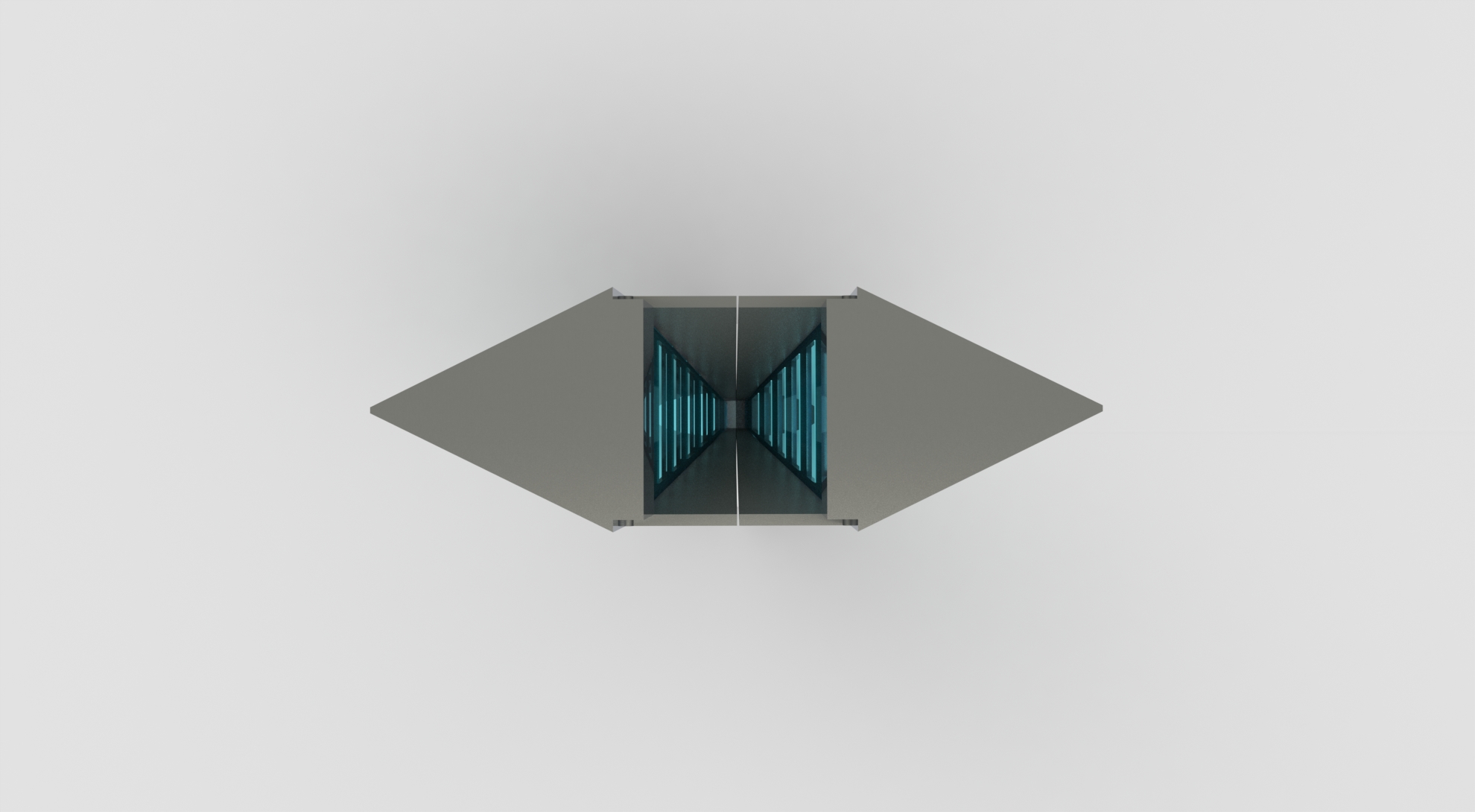

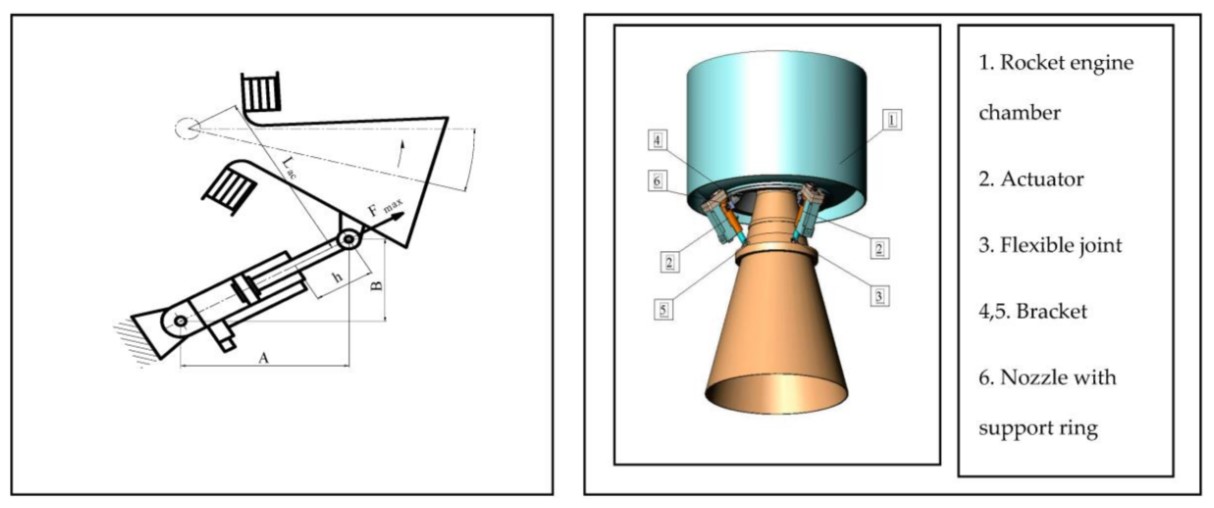
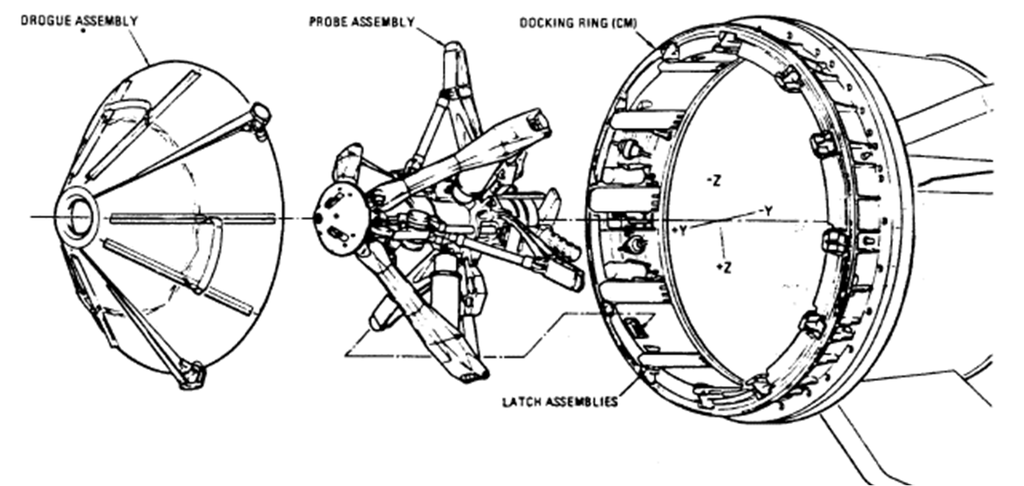
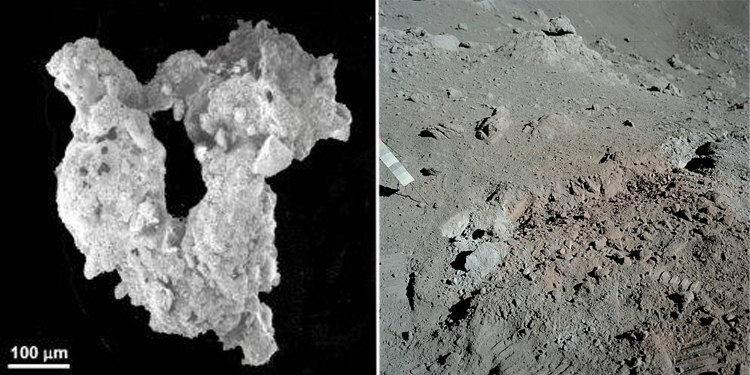
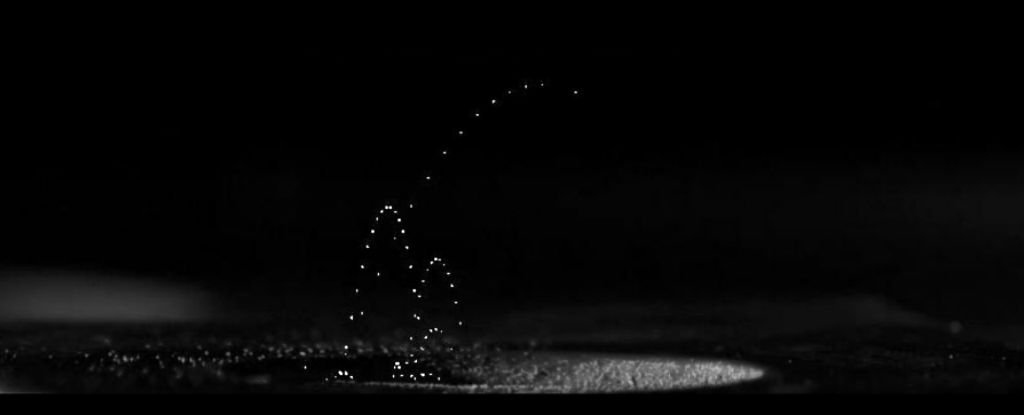
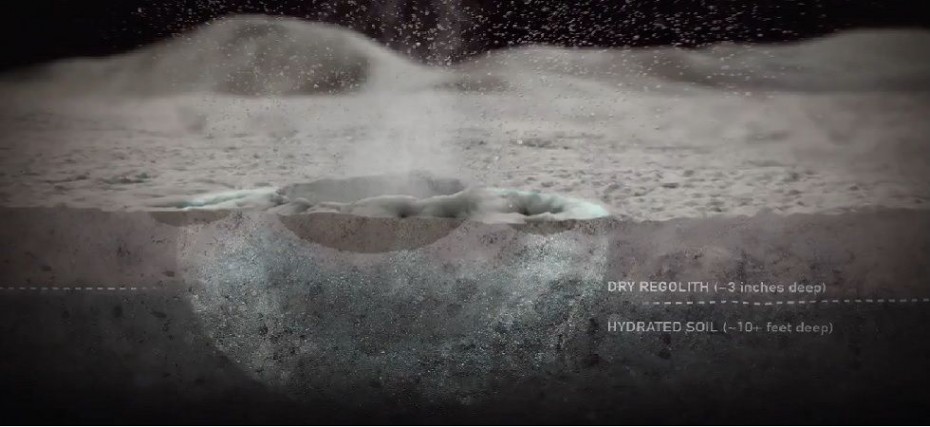
 Refinement 1
Refinement 1
 Concept 4
Concept 4
 Concept 3.
Concept 3.












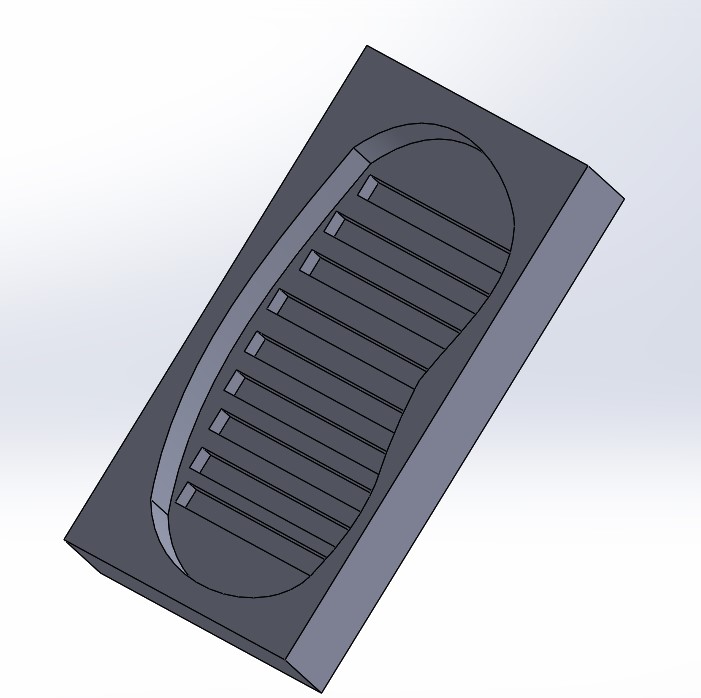
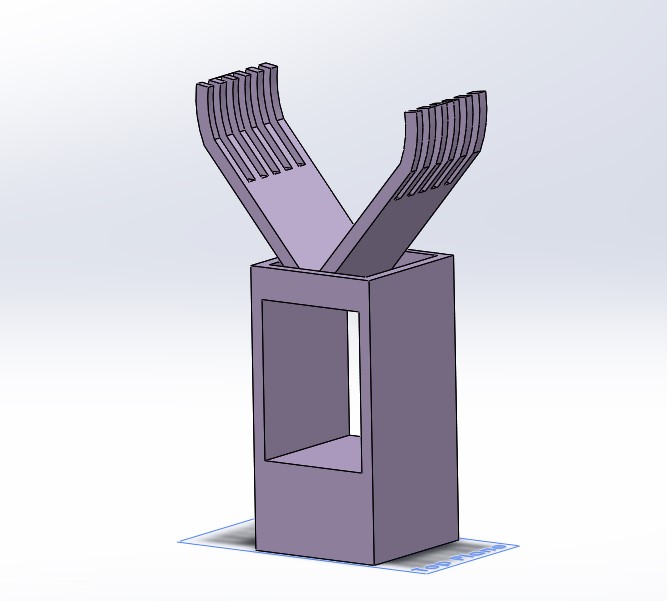
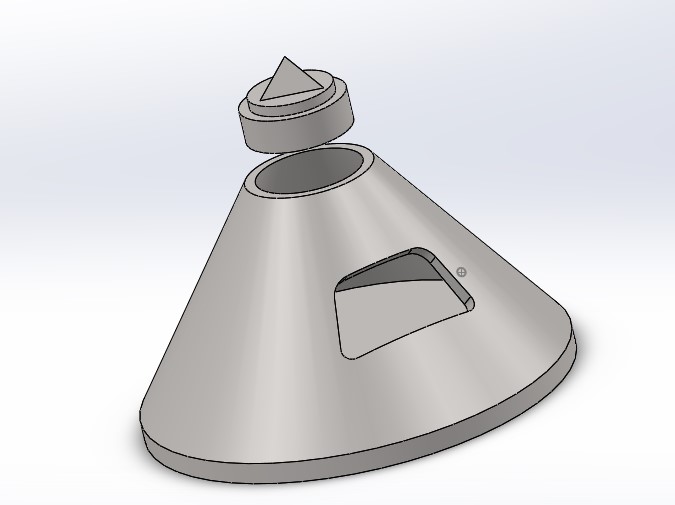
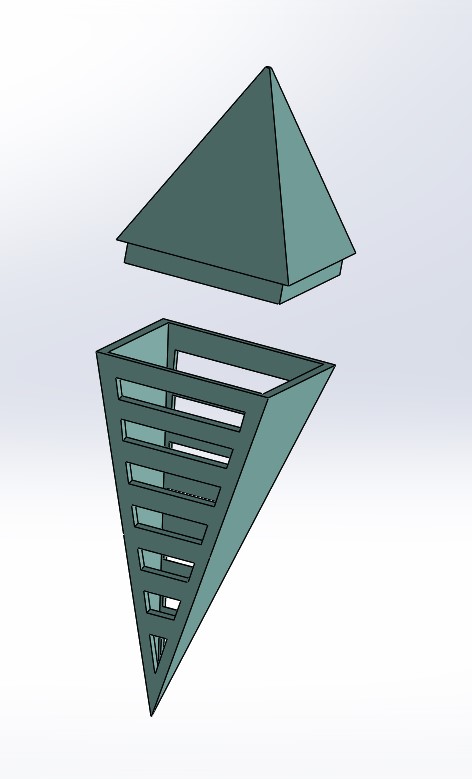
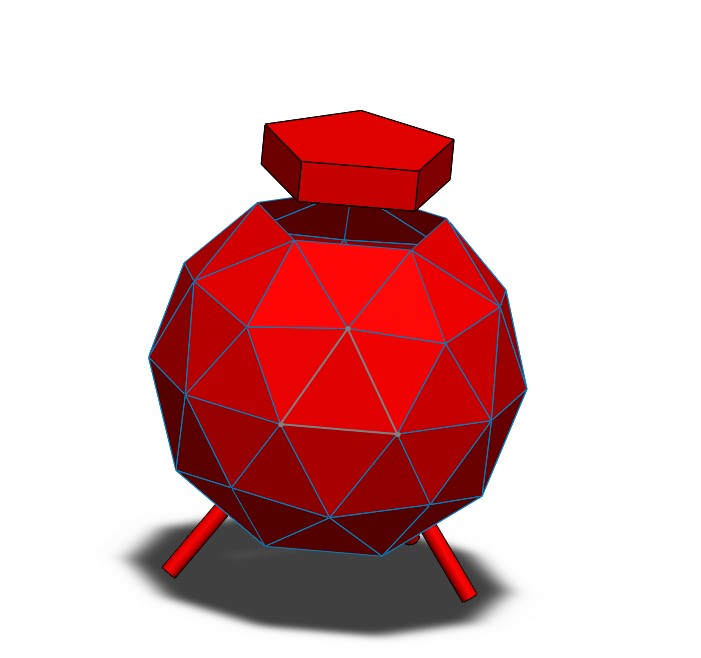

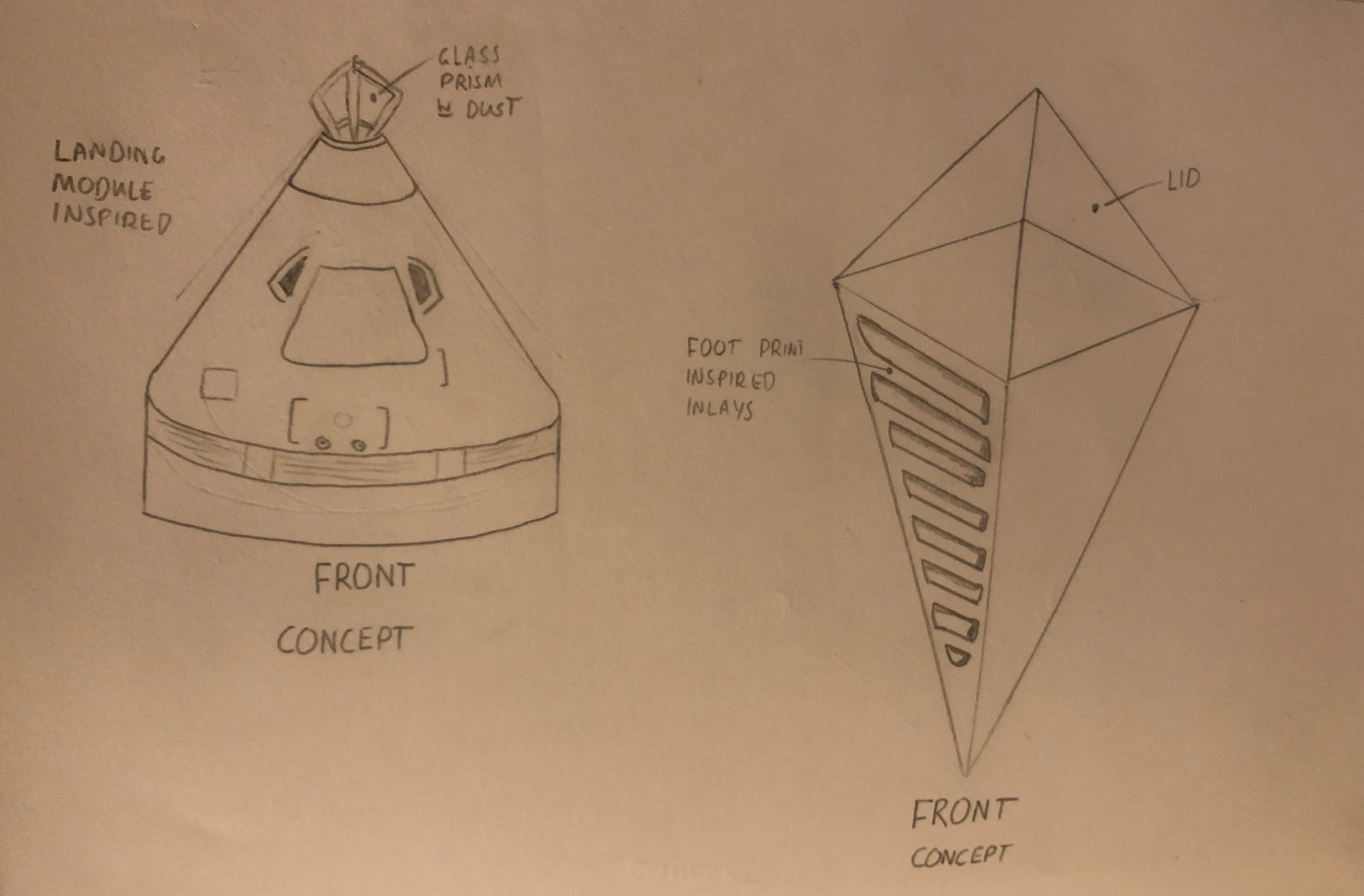



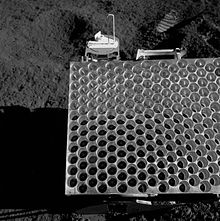
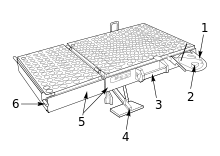
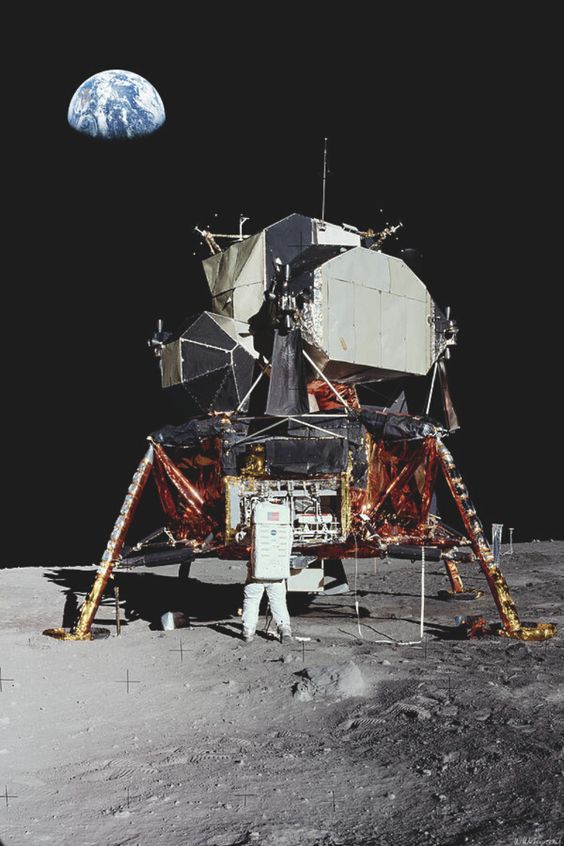
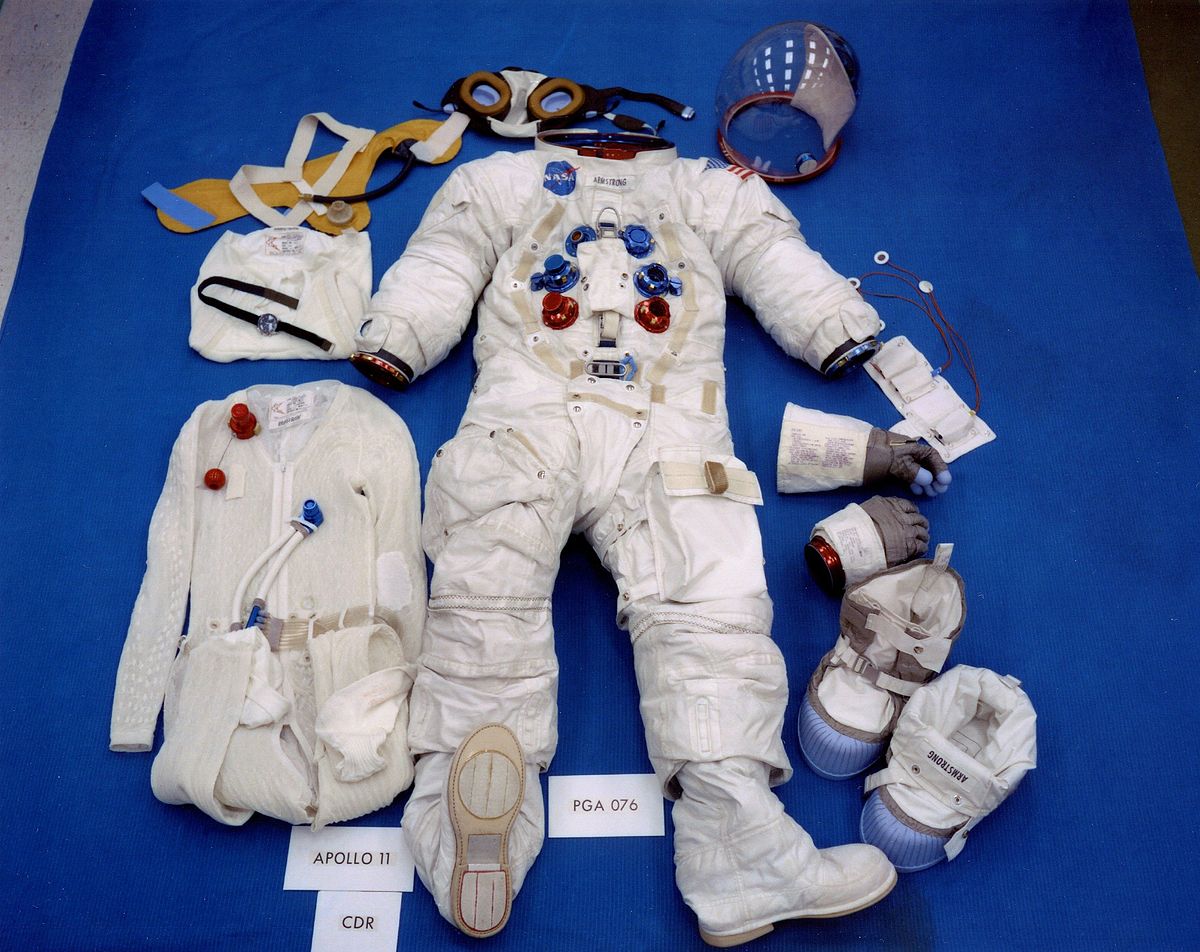


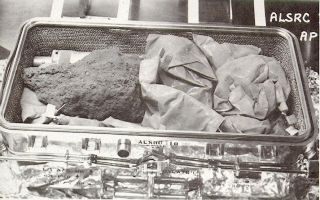
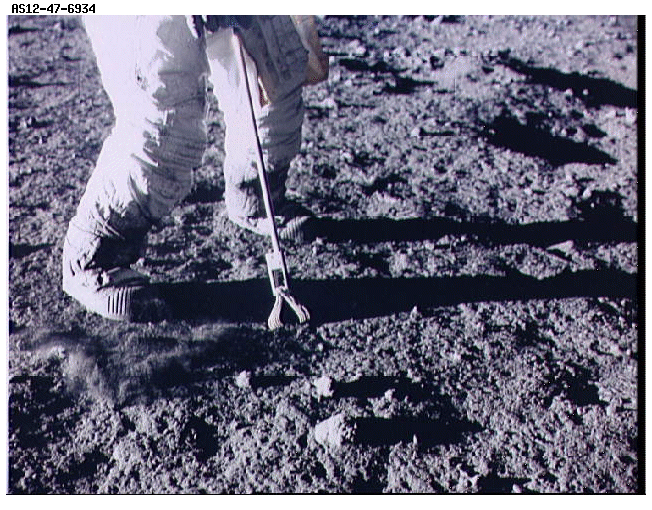 The tools used to collect the samples is of great interest, as there are a great source of insight into the type of design being practiced at NASA
The tools used to collect the samples is of great interest, as there are a great source of insight into the type of design being practiced at NASA
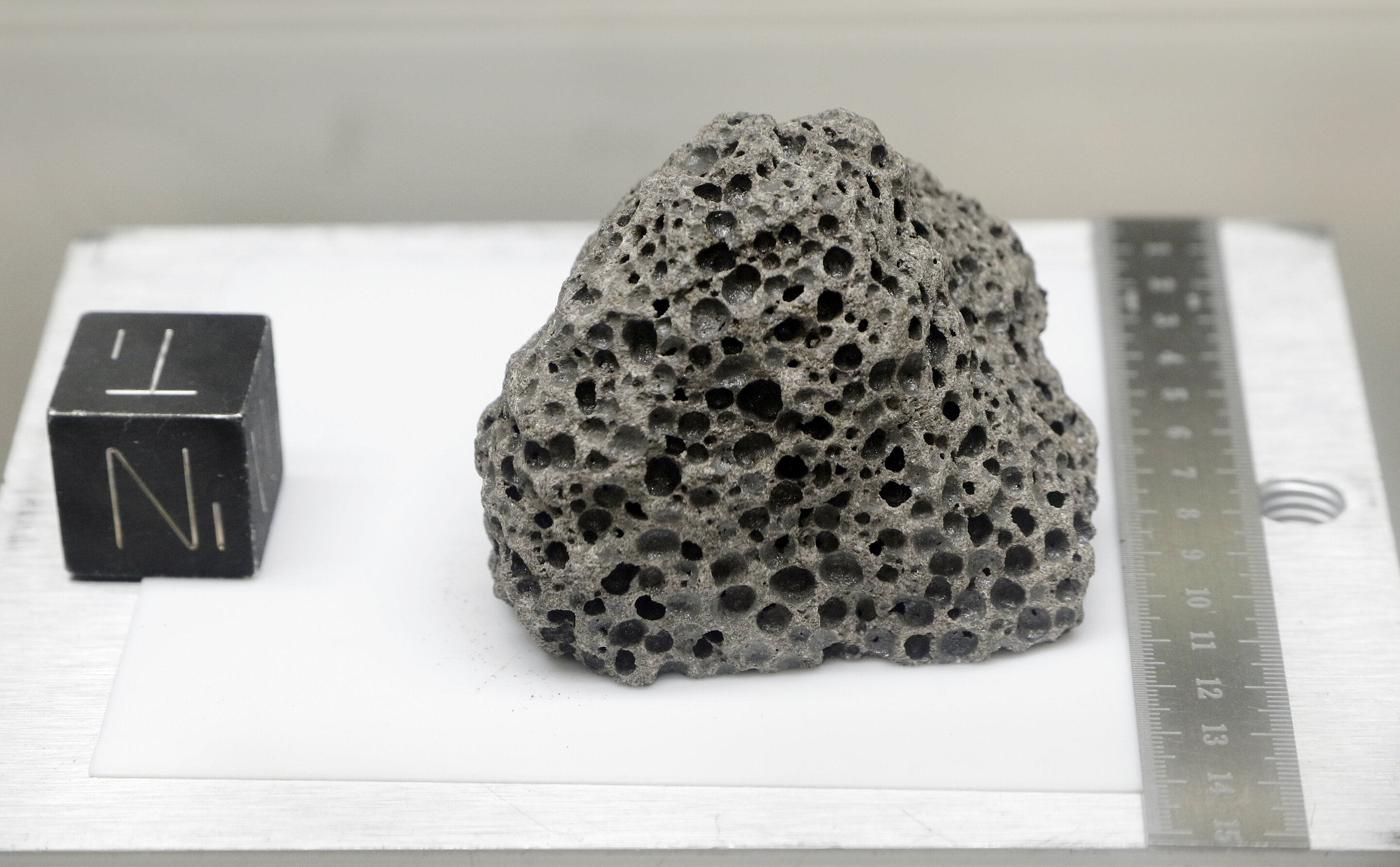 The texture of the moon rock is a great source of inspiration
The texture of the moon rock is a great source of inspiration

